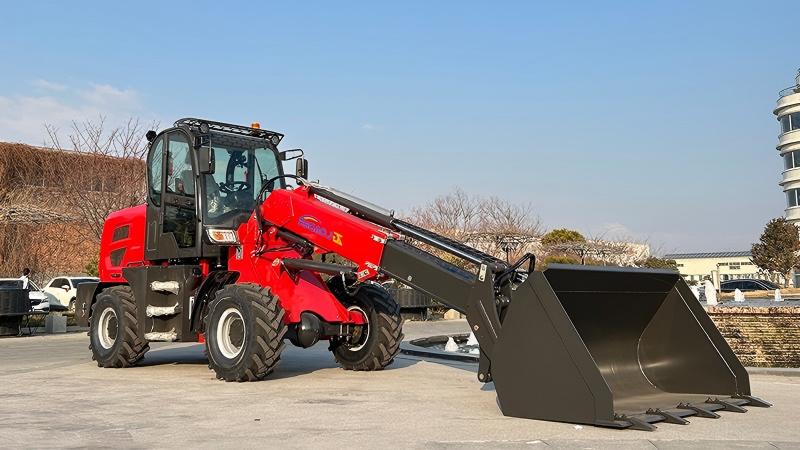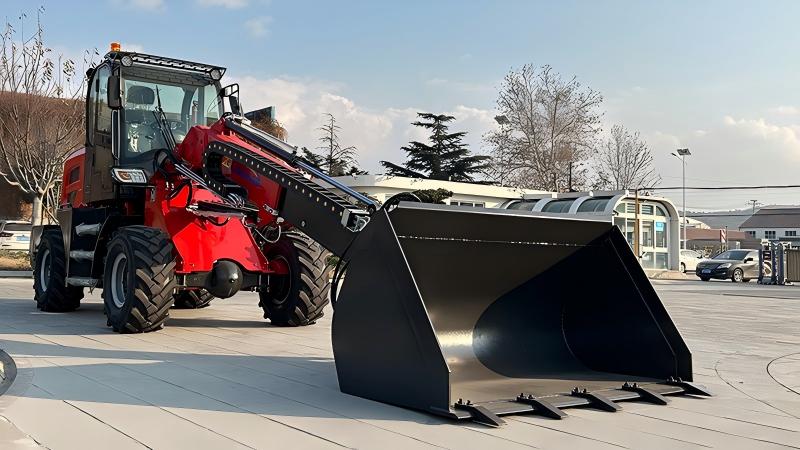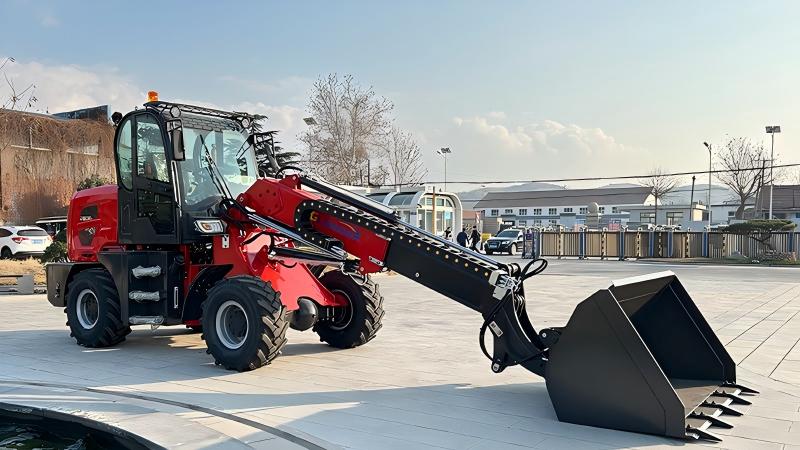The question of "how much does a used telescopic loader cost" is akin to asking the price of a used car; the answer is profoundly complex and hinges on a matrix of interdependent factors. A primary determinant is the machine's size and lift capacity, typically ranging from compact 5,000 lb models to massive 12,000 lb+ machines. A well-maintained, ten-year-old telehandler with a 6,000 lb capacity from a mainstream brand like John Deere or JCB might command between $35,000 and $55,000. However, this is merely a baseline. Machine age and hours of operation are the next critical metrics. A unit with 3,000 engine hours is considered low-use and will hold a significant premium over one with 8,000+ hours, even if they are the same model year. Brand reputation and parts availability also heavily influence price; established brands like Genie, Manitou, and Caterpillar often retain value better due to their dealer networks and reliability. Furthermore, the machine's specification level—including its maximum lift height, whether it has four-wheel drive and four-wheel steering, and the type of cab (standard vs. luxury)—can cause price fluctuations of tens of thousands of dollars. The final, and perhaps most volatile, factor is the machine's condition and service history. A telehandler with a verifiable, full-service history from a single owner, with no structural rust or weld repairs, can be worth 20-30% more than an identical model with an unknown past and visible wear and tear. The used market is a landscape where a $25,000 "bargain" can become a money pit, while a $60,000 "expensive" machine might represent a wiser, lower-cost long-term investment.
Before any financial commitment is made, the single most critical step in purchasing a used telescopic handler is a rigorous and thorough pre-purchase inspection, a process that separates savvy buyers from future victims of catastrophic financial loss. This inspection must be a multi-stage process, beginning with a detailed visual examination of the machine's core structure. The buyer must meticulously inspect the main chassis and the telescopic boom for any signs of cracking, welding repairs, or structural corrosion, particularly in stress points and pivot areas, as any compromise here is a red flag that should terminate the purchase immediately. The second phase involves the mechanical and hydraulic systems. The engine should be cold-started to listen for unusual knocks or smoke, and then operated under load to check for proper power and response. The hydraulic system requires intense scrutiny; all cylinder rams must be inspected for pitting or scoring, and the system must be checked for leaks under high pressure, both while extending the boom and at full height under a load. The telehandler's unique functions, such as the leveling and extension/retraction of the boom, must be tested for smooth, shudder-free operation. Crucially, this inspection is not complete without verifying the machine's electronic control systems and safety features. Fault codes in the engine control unit (ECU) should be read, and all safety interlocks, such as those for the boom and cab, must be functionally tested. For any significant investment, this process should be conducted by a certified third-party mechanic specializing in heavy equipment, not by the buyer alone. The cost of this inspection, typically a few hundred dollars, is the most valuable insurance policy one can buy against a poor investment.
Determining whether a used telehandler is "worth buying" requires a clear-eyed analysis of its value proposition compared to the alternative of leasing or buying new. The most compelling advantage is the significant avoidance of initial depreciation. A new telehandler can lose 20-35% of its value the moment it leaves the dealership and up to 50% within the first three years. By purchasing a machine that is 3-7 years old, the buyer allows the first owner to absorb this steep financial hit, acquiring a still-productive asset at a fraction of its original cost. This lower capital outlay directly translates to improved cash flow and a faster return on investment (ROI), especially for small businesses or startups. Furthermore, if the machine is intended for a single, well-defined project or sporadic use, a used model eliminates the long-term commitment and higher monthly payments of a new machine lease or loan. However, the risks are substantial and must be factored into the financial calculation. The primary con is the assumption of all maintenance and repair liabilities. A used telehandler, particularly one with high hours, is more likely to require costly repairs to its engine, transmission, or complex hydraulic system. Downtime is the silent killer of profitability in construction; a single major breakdown can erase the entire initial savings from buying used. Additionally, older machines may lack the latest safety features, fuel-efficient engines, and advanced telematics systems that boost productivity and reduce operating costs on newer models. The "worth it" calculus, therefore, depends entirely on the buyer's risk tolerance, mechanical aptitude, and financial resilience.
If the decision is made to proceed, transforming a used telehandler from a mere purchase into a strategic asset requires a disciplined approach to acquisition and ongoing ownership. The acquisition strategy should be methodical; rather than jumping on the first apparent deal, a buyer should monitor multiple online marketplaces and auction results for several weeks to understand true market values for the desired specifications. Establishing a relationship with a reputable equipment dealer, rather than a private seller, can sometimes provide a limited warranty or recourse, adding a layer of protection. Once purchased, the new owner must immediately implement a rigorous maintenance regime that exceeds the manufacturer's recommendations. This includes using high-quality fluids and filters, and strictly adhering to service intervals for the engine, hydraulics, and axles. Creating a dedicated log for every service, repair, and even minor greasing is essential for both managing the asset's health and for maximizing its future resale value. Investing in a proper set of attachments, such as forks, buckets, or truss booms, that are in good condition, further enhances the machine's utility and ROI. Finally, the owner must practice proactive operational care. This means training all operators on proper procedures to avoid abusive practices that accelerate wear, such as sideloading the boom or overloading the machine. Storing the telehandler under cover when not in use protects its electronic components and prevents weather-related degradation. By adopting this holistic view—combining a smart purchase with diligent, preventative maintenance and responsible operation—a used telescopic handler can indeed be one of the most cost-effective and valuable pieces of equipment in a fleet, fully justifying the initial investment and delivering years of reliable service.
Post time:Oct.15.2025



